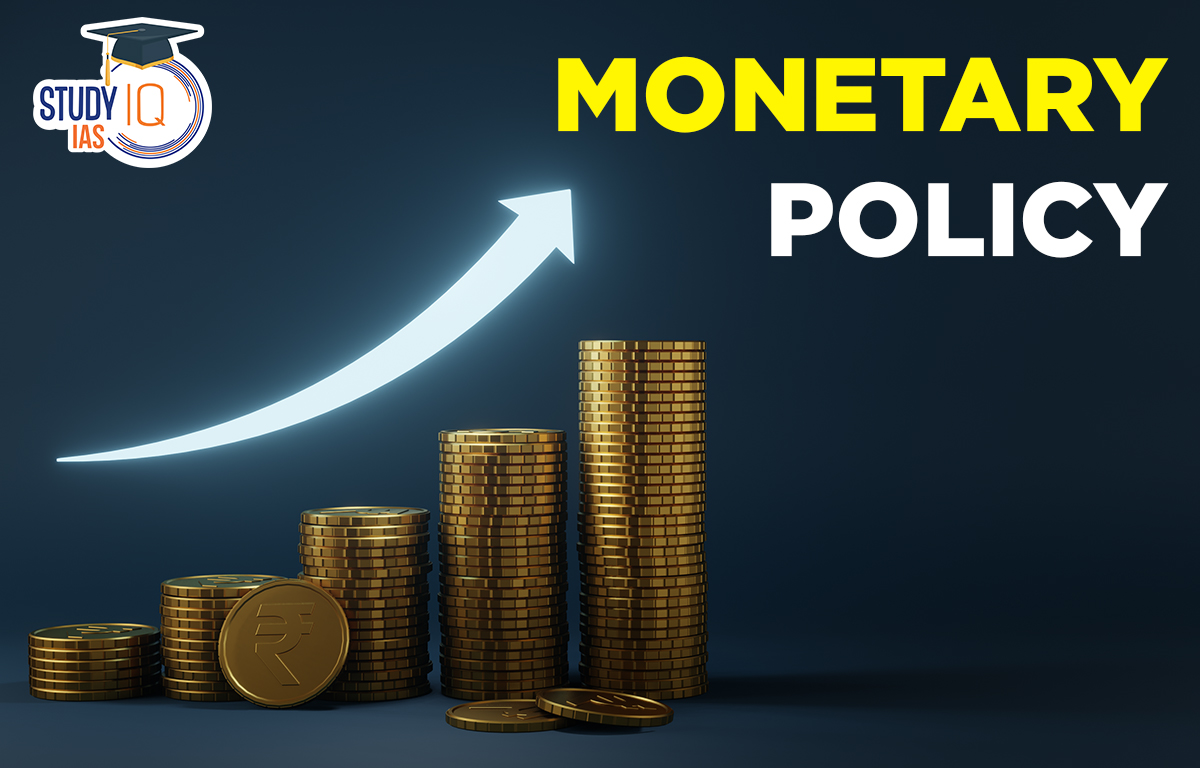Table of Contents
In its latest monetary policy meeting held on December 6, 2024, the Reserve Bank of India (RBI) has decided to keep the policy repo rate unchanged at 6.5%. This decision follows an in-depth analysis of the current macroeconomic situation, with the Monetary Policy Committee (MPC) voting 4-2 to maintain the rate at the same level. This marks the second consecutive time that the RBI has kept the repo rate steady.
RBI Monetary Policy Committee (MPC) Meeting Key Highlights
- Policy Repo Rate: The repo rate remains at 6.50%, unchanged since February 2023. This rate is crucial as it determines the cost for commercial banks to borrow from the RBI, directly influencing interest rates across the economy.
- Standing Deposit Facility (SDF): The SDF continues at 6.25%.
- Marginal Standing Facility (MSF) Rate & Bank Rate: Both rates remain unchanged at 6.75%.
- Monetary Policy Stance: The MPC has decided to maintain a neutral stance in its policy. The neutral stance is aimed at balancing the promotion of economic growth while keeping inflation under control.
- Real GDP Growth Projections: The RBI has revised the GDP growth forecast for FY24-25 to 6.6%. For Q3, the growth rate is projected at 6.8%, while Q4 is expected to witness a rise to 7.2%. Projections for FY25-26 show growth at 6.9% in Q1 and 7.3% in Q2.
- CPI Inflation Projections: The RBI has revised its CPI inflation forecast to 4.8% for FY24-25. The CPI is expected to reach 5.7% in Q3, before decreasing to 4.5% in Q4. For FY25-26, inflation is projected to be 4.6% in Q1 and drop to 4.0% in Q2.
- Cash Reserve Ratio (CRR): The RBI announced a 50 basis points reduction in the CRR, which will be implemented in two phases. The first phase will take effect from December 14, and the second will follow on December 28. This reduction will bring the CRR down to 4%. CRR is the percentage of a bank’s total deposits that must be kept as cash reserves with the RBI, and this move will increase liquidity in the banking system.
Repo Rate Unchanged at 6.5% for the 9th Consecutive Time
- Repo Rate Decision: The Reserve Bank of India (RBI) has kept the repo rate unchanged at 6.5%, marking the ninth consecutive policy meeting where this benchmark rate remains stable. The decision is in line with the central bank’s ongoing efforts to manage inflation and sustain economic stability.
- Economic Indicators:
- Current Account Deficit: Moderated to 0.7% of GDP for the fiscal year 2023-2024.
- Forex Reserves: Reached a record high of $675 billion.
- Food Inflation: Remains a concern, with RBI monitoring its impact on overall inflation.
- Financial Sector:
- UPI Transaction Limit: Increased from ₹1 lakh to ₹5 lakh per transaction, aimed at enhancing digital payment adoption and financial inclusion.
- Stock Market Reaction: Nifty Bank fell by half a percent following the announcement, with the overall market showing a downward trend prior to the policy announcement.
RBI Monetary Policy
Under the terms of the RBI Act, this monetary policy was developed in 1934. This strategy, which can be either contractionary or expansionary, differs from Fiscal Policy, which controls the nation’s taxes and overall spending. An expansionary policy is used when there is a sudden increase in the overall amount of money. A contractionary policy is used when there is a slower rate of growth or decline in the money supply.
The Reserve Bank of India established a system of rules called a monetary policy that regulates how all of the financial institutions in the nation operate. Bank interest rates, including additional rates like the SLR, CRR, etc., are under the jurisdiction of the RBI’s monetary policy. The RBI Monetary Policy Committee has kept the key policy repo rate unchanged at 6.5%.
| Reserve Bank Of India |
|
Need of RBI Monetary Policy
The central bank uses monetary policy, a procedure, to control the money supply to accomplish particular objectives including preventing inflation, preserving a fair exchange rate, generating employment, and fostering economic progress. Changing interest rates through open market operations, reserve requirements, or foreign exchange trading is part of monetary policy, whether it be directly or indirectly.
Conducting monetary policy is the responsibility of published by the RBI’s Monetary Policy Committee. The Reserve Bank of India Act, of 1934 specifically mandates this obligation. With the advent of the Monetary Policy Framework (MPF), Monetary Policy Committee (MPC), and Monetary Policy (MPP) Process, there have recently been numerous changes made to how India’s monetary policy is established.
RBI Monetary Policy Committee (MPC)
- The Monetary Policy Committee (MPC) was established as per the provisions of Section 45ZB of the amended RBI Act, 1934, by the central government in 2016.
- Its key purpose, as specified in the Act, is to decide the policy rate necessary for maintaining targeted inflation levels.
- Composition: The MPC consists of six members,
- RBI Governor serving as the ex-officio chairperson.
- Deputy Governor responsible for monetary policy,
- RBI officer nominated by the Central Board, and three experts appointed by the central government.
- These experts are selected based on their expertise and experience in economics, banking, finance, or monetary policy and are known for their integrity and capability.
- Quorum For Meeting: The RBI must hold at least four Monetary Policy Committee meetings annually.
- A quorum for the meetings requires at least four members, including the Governor or, in his absence, a Deputy Governor who is a committee member.
- Headed By: The Governor, or in his absence a Deputy Governor who is on the committee, will chair the meetings.
- Decision Making: All questions which come up before any meeting of the Monetary Policy Committee shall be decided by a majority of votes by the Members present and voting.
- Each committee member is entitled to one vote.
- Each Member of the Monetary Policy Committee has one vote and in the event of an equality of votes, the Governor shall have a second or casting vote.
- Decisions made by the MPC are mandatory for the Reserve Bank of India to follow.
Read about: List of RBI Governors
RBI Monetary Policy Tools or Instruments
Quantitative Tools Of Monetary Policy
- Cash Reserve Ratio (CRR): This is the percentage of a bank’s total deposits that must be kept in the form of cash reserves with the central bank. By adjusting the CRR, the RBI can control the amount of funds available to the banks for lending.
- Statutory Liquidity Ratio (SLR): SLR refers to the minimum percentage of deposits that a bank must maintain in the form of gold, cash, or other approved securities. Changes in SLR can influence the bank’s ability to lend.
- Repo Rate: This is the rate at which the central bank lends short-term money to commercial banks. An increase in the repo rate makes borrowing from the central bank more expensive, thereby reducing the money supply in the economy.
- Reverse Repo Rate: This is the rate at which the central bank borrows money from commercial banks. A higher reverse repo rate incentivizes banks to park more funds with the central bank, reducing the money supply.
- Open Market Operations (OMOs): These involve the buying and selling of government securities in the open market by the central bank. When the central bank buys securities, it injects liquidity into the economy; selling securities does the opposite.
- Bank Rate: This is the rate at which the central bank provides long-term finance to commercial banks. A higher bank rate results in higher lending rates by banks, thereby moderating the growth of credit in the economy.
- Marginal Standing Facility (MSF): Under this facility, banks can borrow overnight funds from the central bank against approved government securities. This rate is usually set higher than the repo rate.
Qualitative Tools Of Monetary Policy
- Rationing of Credit: The RBI may fix a credit amount to be granted to commercial banks. This involves setting limits on the amount available for each commercial bank, which helps in lowering the bank’s credit exposure to certain sectors.
- Regulation of Consumer Credit: This involves regulating the supply of consumer credit through mechanisms like installment sale and hire purchase of consumer goods. Features like installment amount, down payment, and loan duration are fixed in advance, which helps to check the credit and inflation in the country.
- Change in Marginal Requirement: The RBI can adjust the margin, which is a certain proportion of the loan amount not financed by the bank. By changing the margin, the RBI can influence the size of the loan, encouraging credit supply for necessary sectors and avoiding it for others.
- Moral Suasion: This involves the RBI using persuasion, suggestions, and advice to commercial banks to undertake certain actions in the economic interests of the country. While these directives are not mandatory, they are morally binding on the banks.
| Other Important Tools |
|
Monetary Policy Types
1. Expansionary Monetary Policy
It involves increasing the money supply in an economy, usually implemented by lowering key interest rates to boost economic activity.
- The Reserve Bank of India (RBI) may reduce policy rates like Repo, Reverse Repo, MSF, and Bank Rate. This leads to increased bond prices, lower interest rates, and enhanced capital investment.
- Domestic bonds become less attractive, reducing the demand for domestic currency and lowering the exchange rate.
- This boosts exports, reduces imports, and improves the balance of trade.
2. Contractionary Monetary Policy
It aims to decrease the money supply, often by raising key interest rates, which can slow economic growth. When RBI adopts this policy, it increases policy rates.
- This results in decreased bond prices and higher interest rates, leading to reduced capital investment.
- Domestic bonds become more attractive, increasing the demand for domestic currency and the exchange rate.
- Consequently, exports decrease, imports increase, and the balance of trade diminishes.
Role of RBI Monetary Policy
To establish a statutory and institutionalized structure for a monetary policy committee to achieve price stability while keeping growth as a goal in mind, the Reserve Bank of India Act of 1934 was changed by the Finance Act of 2016. The committee is in charge of determining the benchmark policy rate (repo rate) required to maintain inflation within the designated target level.
The main objective of monetary policy is to balance the supply and demand of money. As the economy expands, so does the demand for money. The central government increases the money supply proportionately to the increase in demand to prevent inflation.
RBI Monetary Policy Objectives
High employment rates, a stable price level, and an improvement in economic conditions are all the main objectives of the RBI Monetary Policy. There are six main goals of monetary policy, and they are listed here.
1. The Neutrality of Money
The primary proponents of the neutral money objective of monetary policy include several outstanding economists including Wick Steed and Robertson. The policy states that the government must aim to prevent money from being aligned with the economy of the nation. Economic turbulence can result from any shift in currency. They contend that altering any policy element will negatively impact the nation’s overall economic situation.
They further contend that rigorous adherence to the neutral monetary policy will minimise cyclical variations and prevent trade cycles, inflation, and deflation in the nation’s economy. The authorities in this place maintain a stable currency. The primary goal of this Monetary Policy objective is to maintain absolute stability in the money supply.
2. Exchange Stability
The conventional goal of monetary policy authority is exchange stability. One of the key goals of the Gold Standard for various nations was this. These movements served to automatically adjust any imbalances or changes to the amount of money. Unpredictability in the conversation rates will result in gold withdrawals or inflows, upsetting the undesirable payment balance.
As a result, stable currency rates are crucial for international trade. Therefore, the main goal of monetary policy is to stabilize and manage the external changes that are occurring in a nation. Avoiding factors that could lead to exchange rate instability is crucial.
- It may have a sharp volatility, which can increase market speculation.
- More volatility can result in significant losses, undermine domestic confidence, and create difficulties for international investors. This will have a negative influence on capital outflow, which is essential for capital formation and growth.
- More exchange rate fluctuations may also result in higher prices and higher levels of prices.
3. Price Stability
One of the main goals of monetary policy, it has received significant attention in the twenty-first century. The most reliable and significant goal of monetary policy is price stability.
Prices that remain steady boost public trust and eliminate cyclical volatility. Thus, it promotes economic equality and helps people appreciate the importance of business activity. As a result, the community experiences an overall wave of welfare and wealth that is beneficial to everyone.
Additionally, price stability promotes the improvement of the nation’s economic situation. Additionally, the growth in good output benefits both the nation and its citizens. Additionally, it raises imports while lowering exports. Following the introduction of the monetary policy, certain slight price increases also aid the successful operation of the nation’s economy.
4. Full Employment
People who were working were fired as a result of the unexpected rise in unemployment during the Great Depression, which led to widespread unemployment throughout society. It is acknowledged to be both economically wasteful and socially hazardous. As a result, it was also stated as the primary goal of monetary policy. Currently, it is also referred to as full employment, which could have a direct impact on the stability of the exchange rate and pricing. If both of these things operate together, everything will run more smoothly.
According to the economist, having a balance between saving and investment at the full employment level is the essential factor in achieving full employment. According to classical economists, full employment is a typical aspect of the economy, but in the current environment, it cannot be fully utilized; as a result, full employment is necessary for better improvement of the nation’s economic status.
They also consider those who worked for some time before losing their position to be employed. Following the completion of the goal of full employment, monetary policy must work toward price balancing. Some of the ways the policy can be applied are listed below:
- Given that disguised unemployment is on the rise in countries like India, monetary policy is more appropriate for nations like ours.
- The policy can address the genuine unemployment issue, which will fuel the nation’s brisk economic expansion.
- It is one of the most practical tools for promoting the community’s economic and social welfare.
5. Economic Growth
In recent years, economic development has gained significant attention from politicians and economists all across the world. Utilizing human, natural, and other resources is also necessary if we want to raise the per capita income of the nation. The majority of the time, a nation’s economy is determined by its per capita income. Another important goal of monetary policy is to enhance per capita income, which is necessary if we wish to boost the nation’s economy.
6. Stability in the Balance of Payments
Another goal of monetary policy is the balance of payments. It was first made available after the war. This monetary policy objective’s primary goal stems from the problem with global trade’s lack of international liquidity. It was believed that the increase in the payment balance deficit decreased. Many less developed nations reduce their imports, which negatively impacts the economy and development of the nation. Consequently, this goal brings about a balance in the payments.


 Nilgiri Biosphere Reserve, Map, Climate,...
Nilgiri Biosphere Reserve, Map, Climate,...
 Growth in Gold Loans and NPAs, Reasons a...
Growth in Gold Loans and NPAs, Reasons a...
 How RBI Responded To Global Trade War Ch...
How RBI Responded To Global Trade War Ch...





















